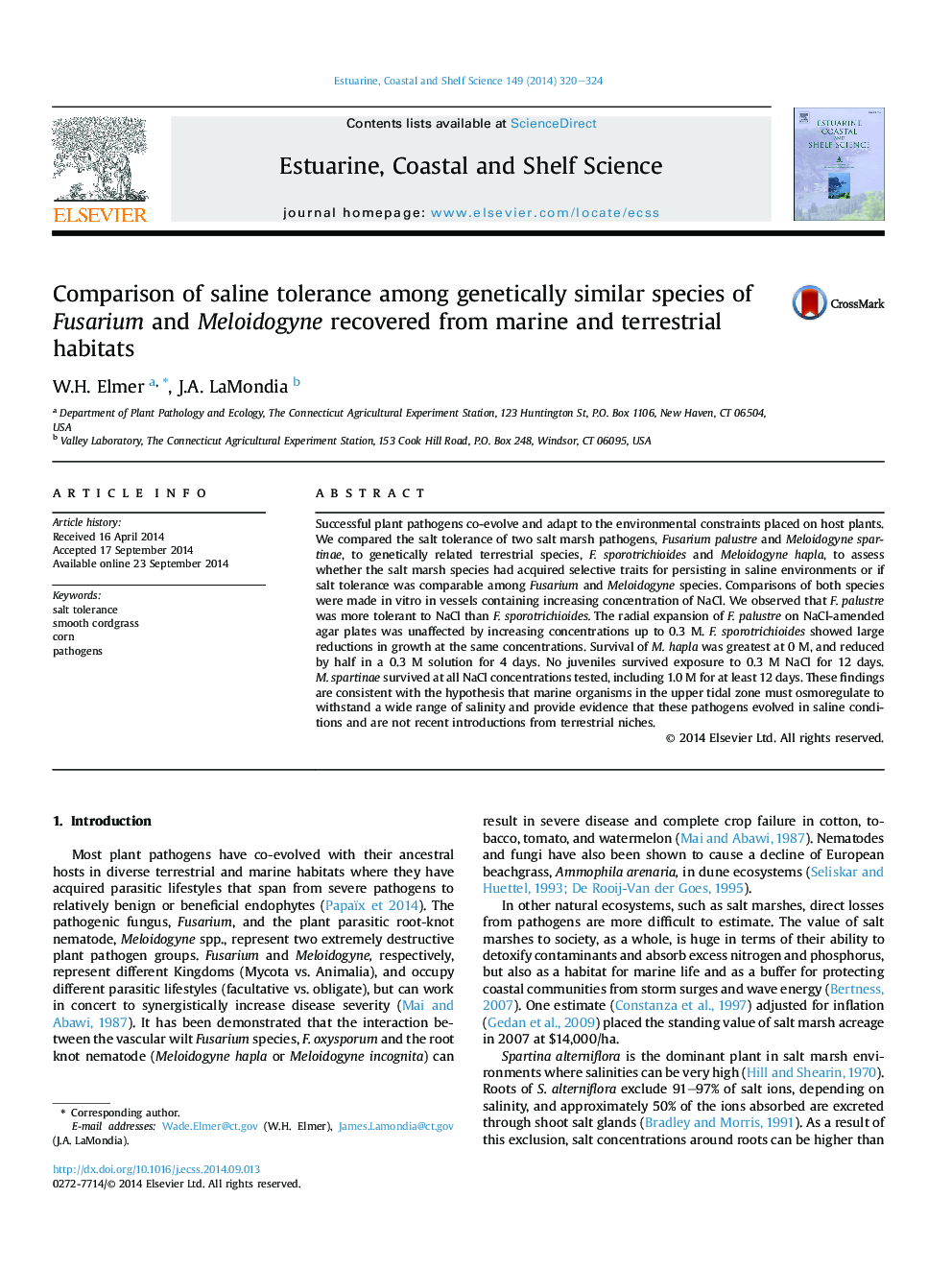| Article ID | Journal | Published Year | Pages | File Type |
|---|---|---|---|---|
| 6384915 | Estuarine, Coastal and Shelf Science | 2014 | 5 Pages |
Abstract
Successful plant pathogens co-evolve and adapt to the environmental constraints placed on host plants. We compared the salt tolerance of two salt marsh pathogens, Fusarium palustre and Meloidogyne spartinae, to genetically related terrestrial species, F. sporotrichioides and Meloidogyne hapla, to assess whether the salt marsh species had acquired selective traits for persisting in saline environments or if salt tolerance was comparable among Fusarium and Meloidogyne species. Comparisons of both species were made in vitro in vessels containing increasing concentration of NaCl. We observed that F. palustre was more tolerant to NaCl than F. sporotrichioides. The radial expansion of F. palustre on NaCl-amended agar plates was unaffected by increasing concentrations up to 0.3 M. F. sporotrichioides showed large reductions in growth at the same concentrations. Survival of M. hapla was greatest at 0 M, and reduced by half in a 0.3 M solution for 4 days. No juveniles survived exposure to 0.3 M NaCl for 12 days. M. spartinae survived at all NaCl concentrations tested, including 1.0 M for at least 12 days. These findings are consistent with the hypothesis that marine organisms in the upper tidal zone must osmoregulate to withstand a wide range of salinity and provide evidence that these pathogens evolved in saline conditions and are not recent introductions from terrestrial niches.
Related Topics
Physical Sciences and Engineering
Earth and Planetary Sciences
Geology
Authors
W.H. Elmer, J.A. LaMondia,
